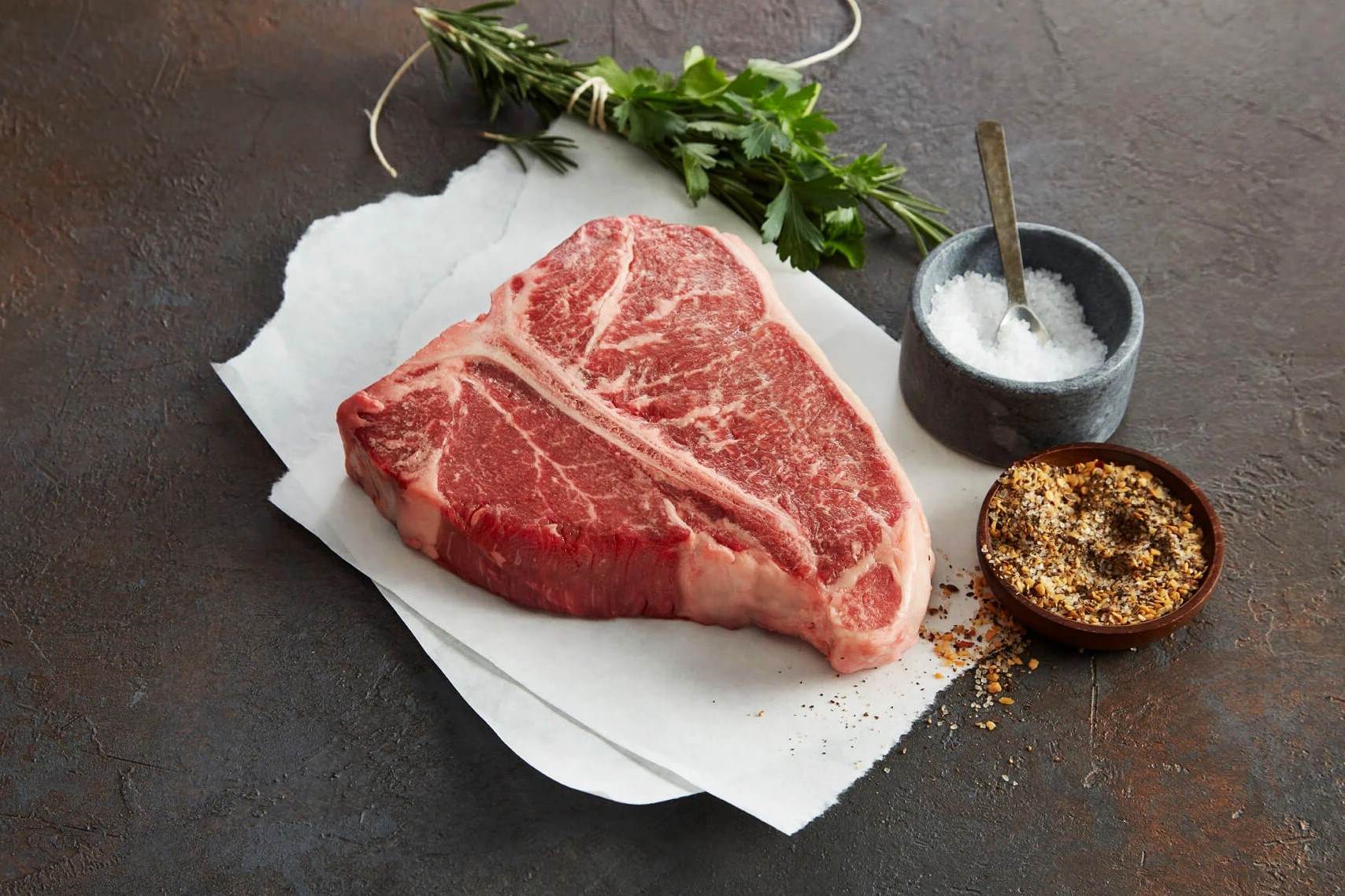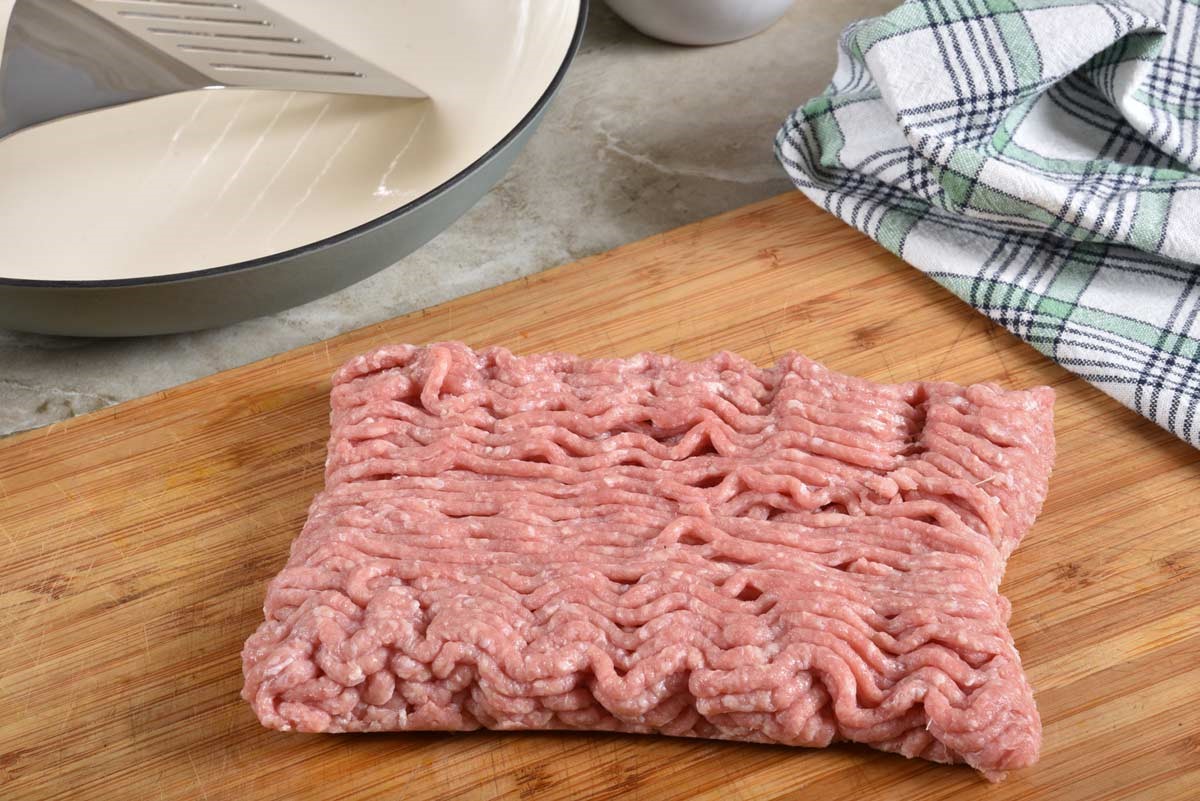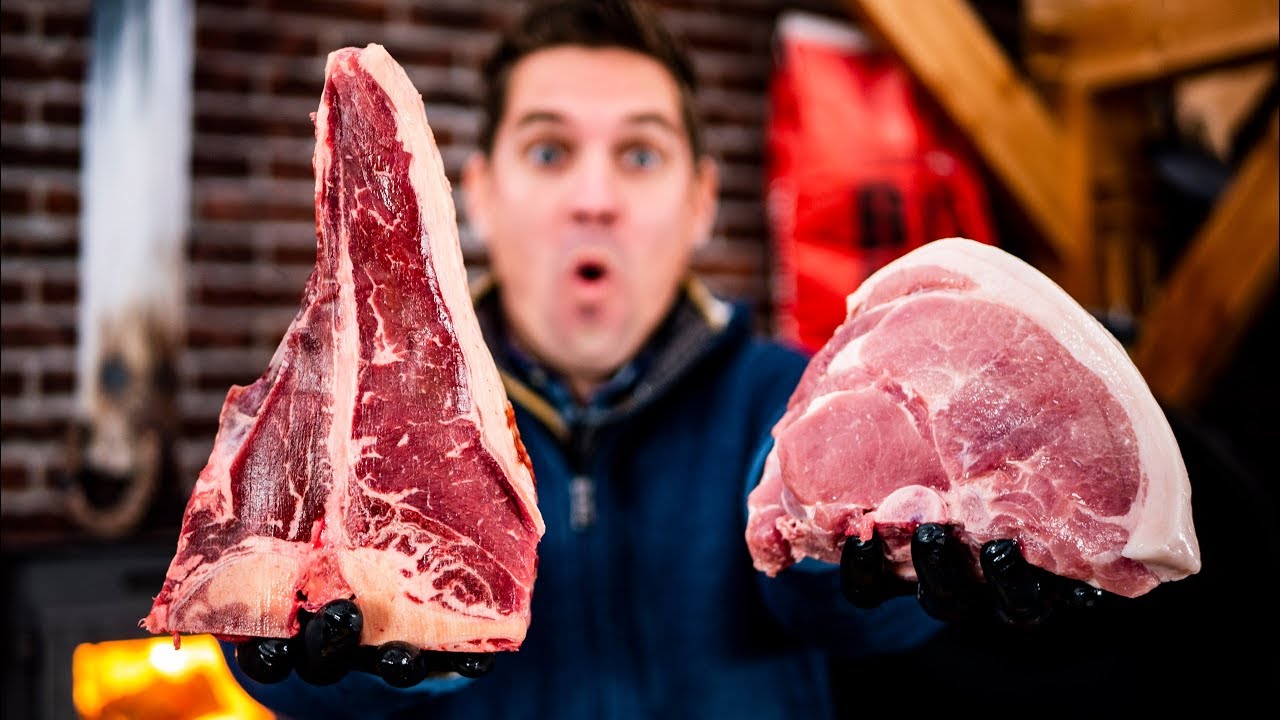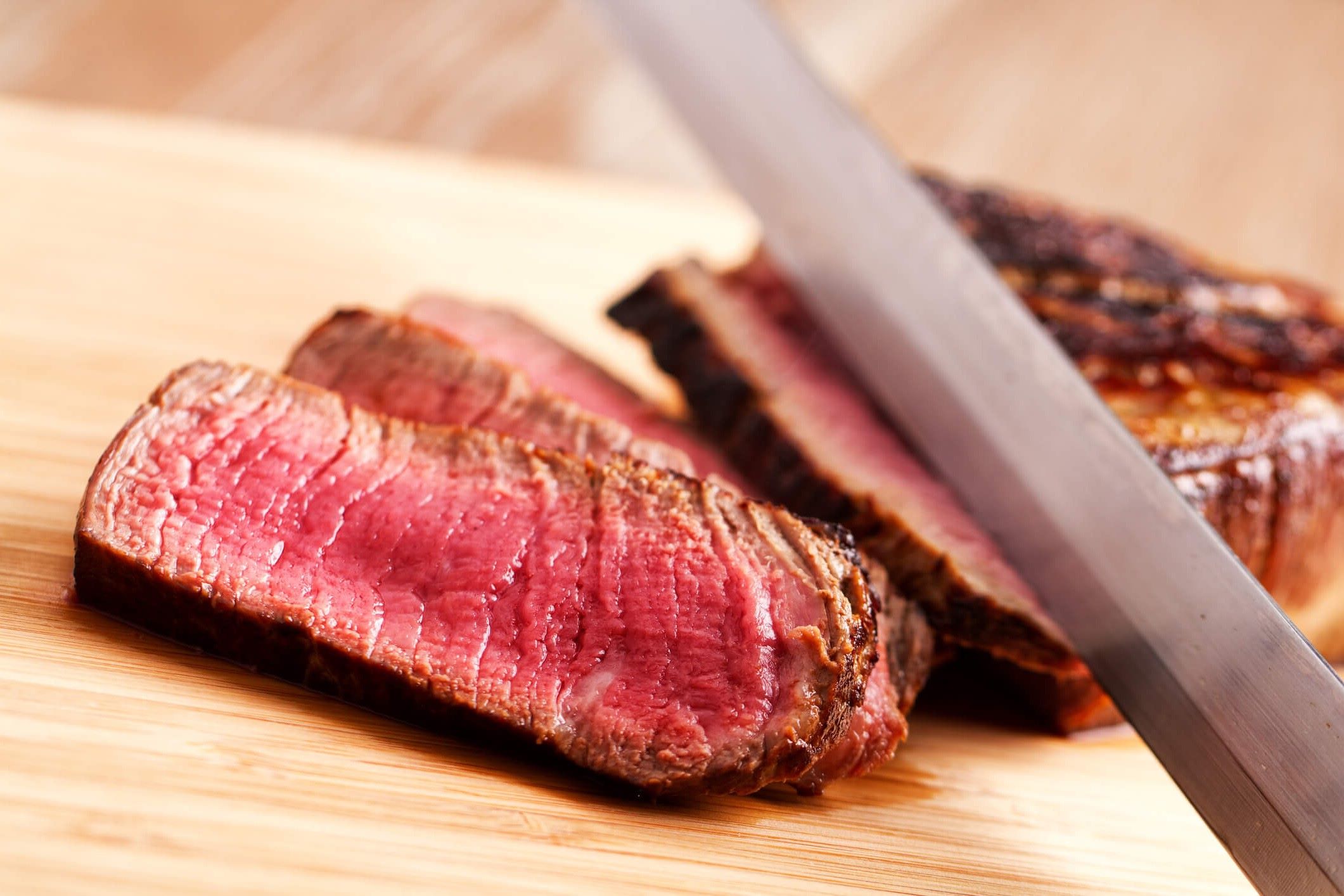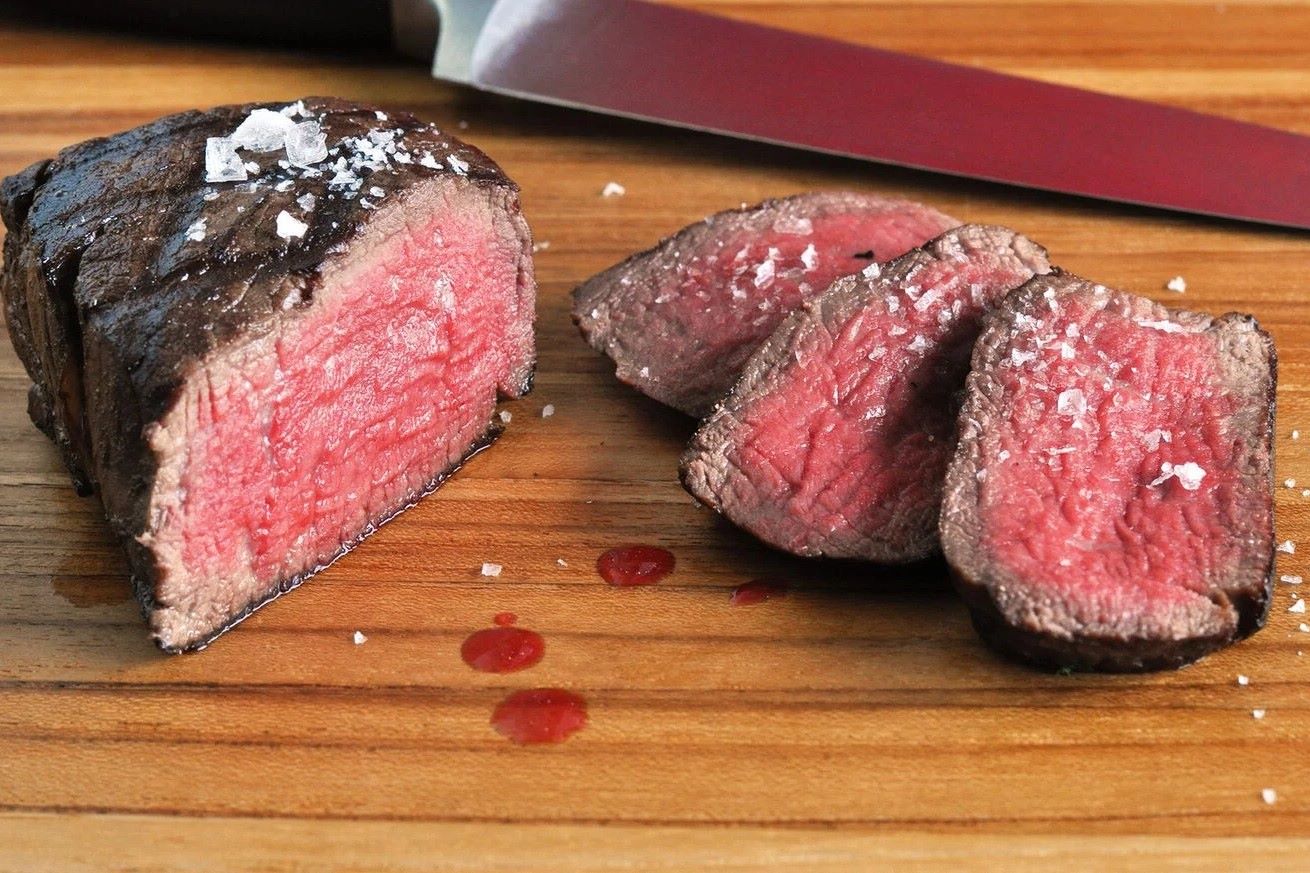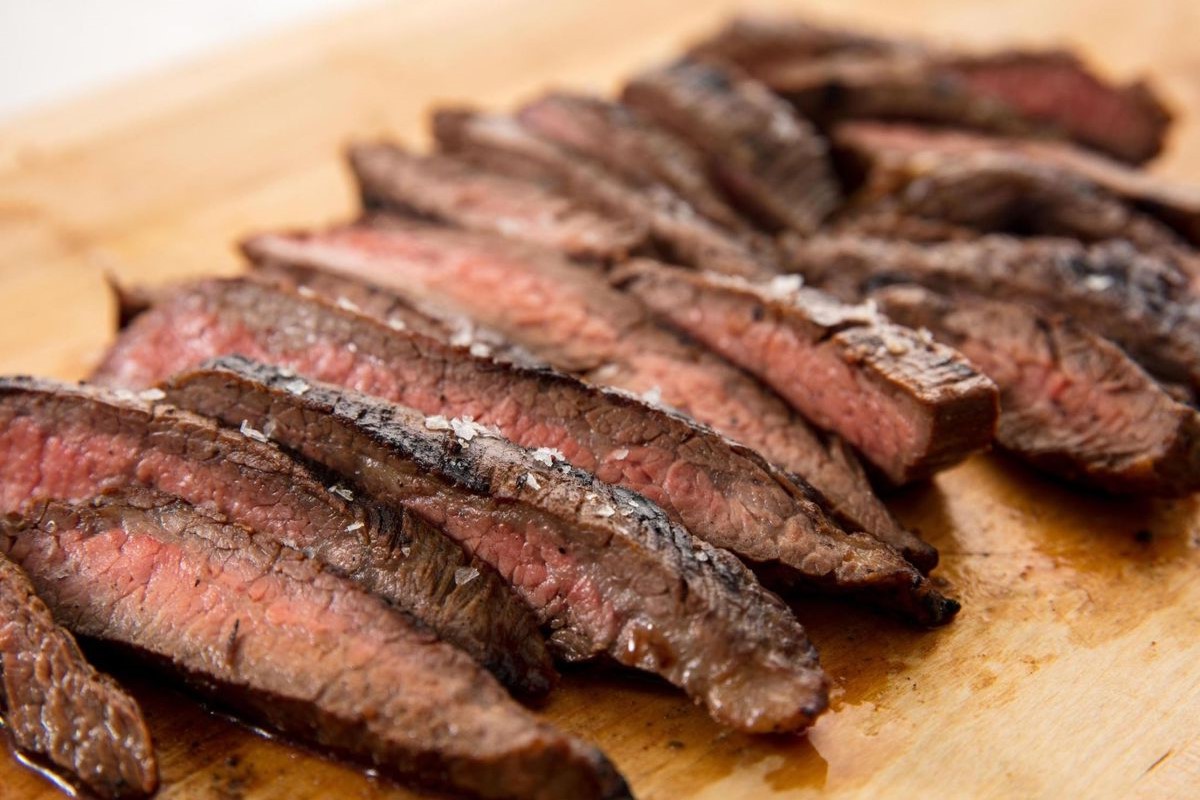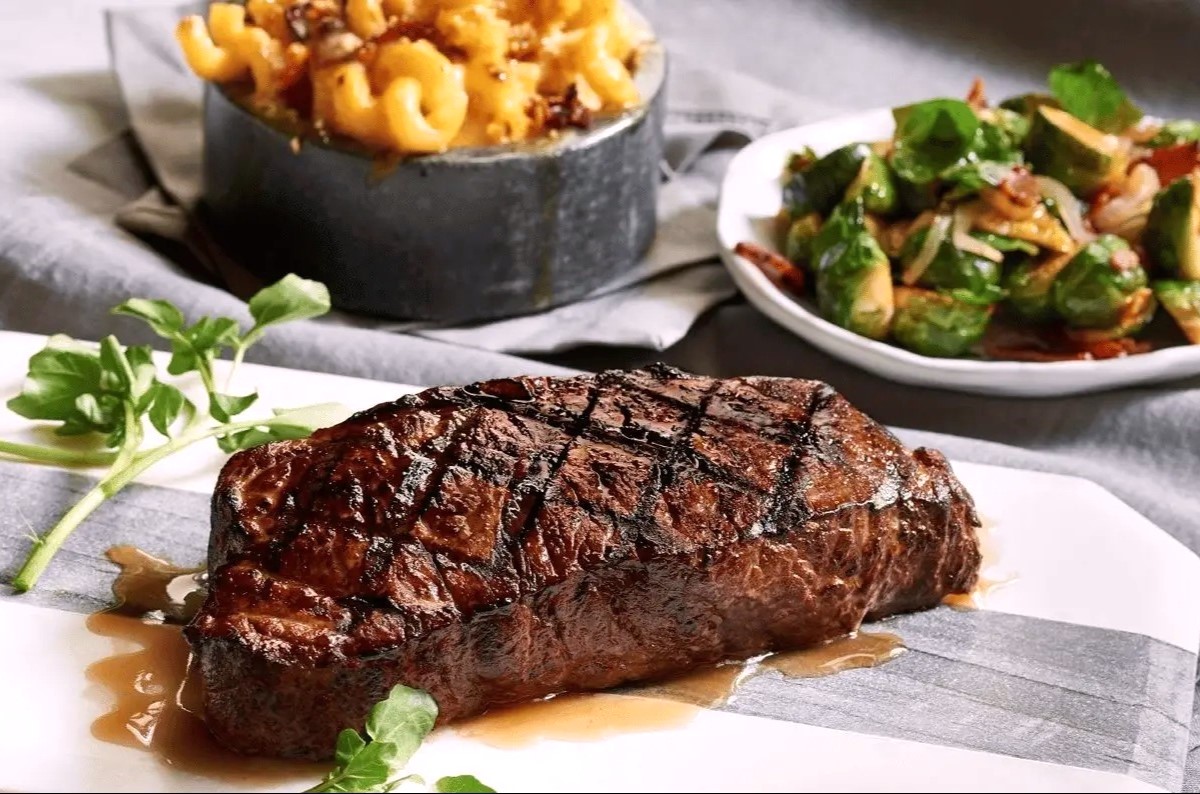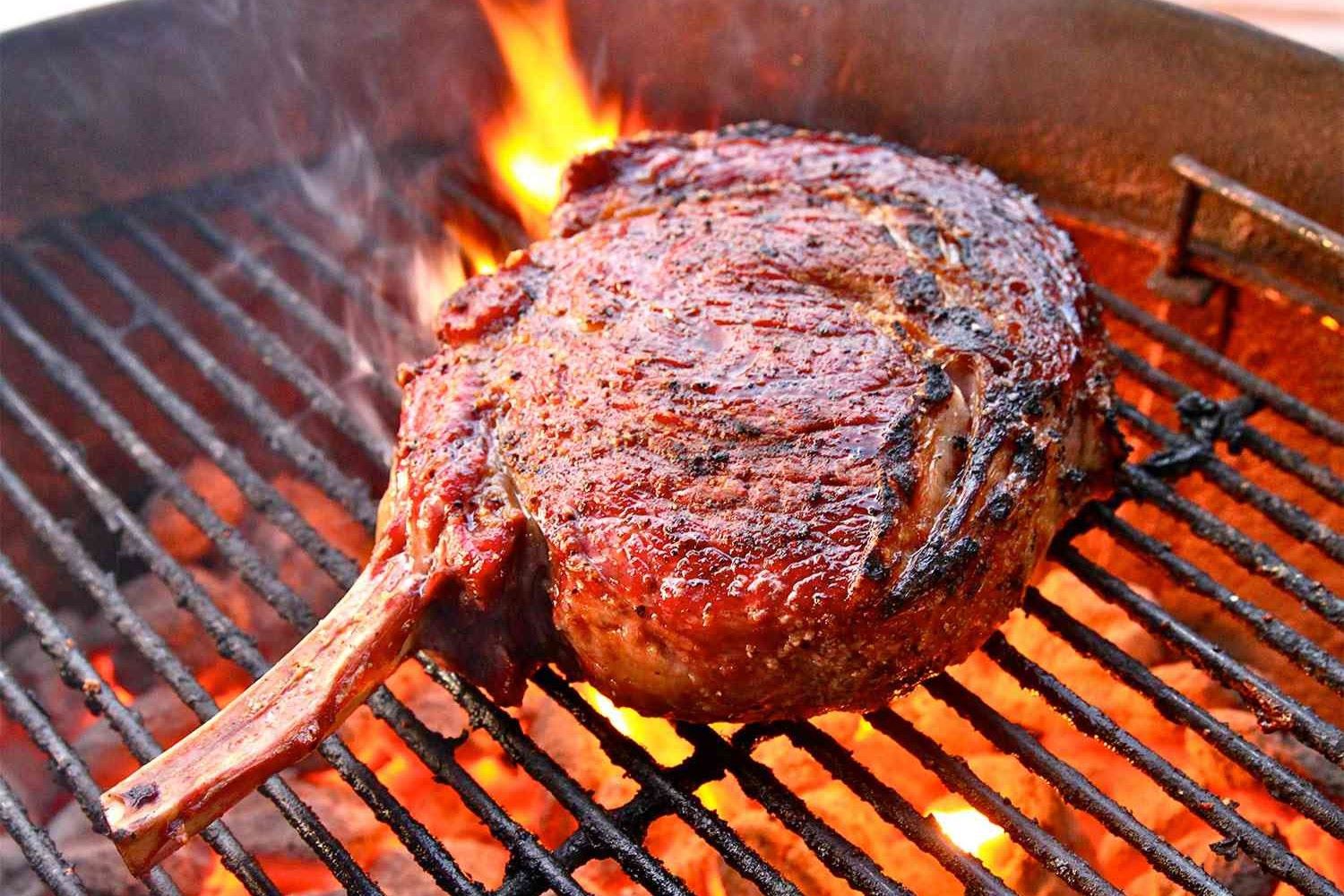Home>Food and Cooking>How To Defrost Steak
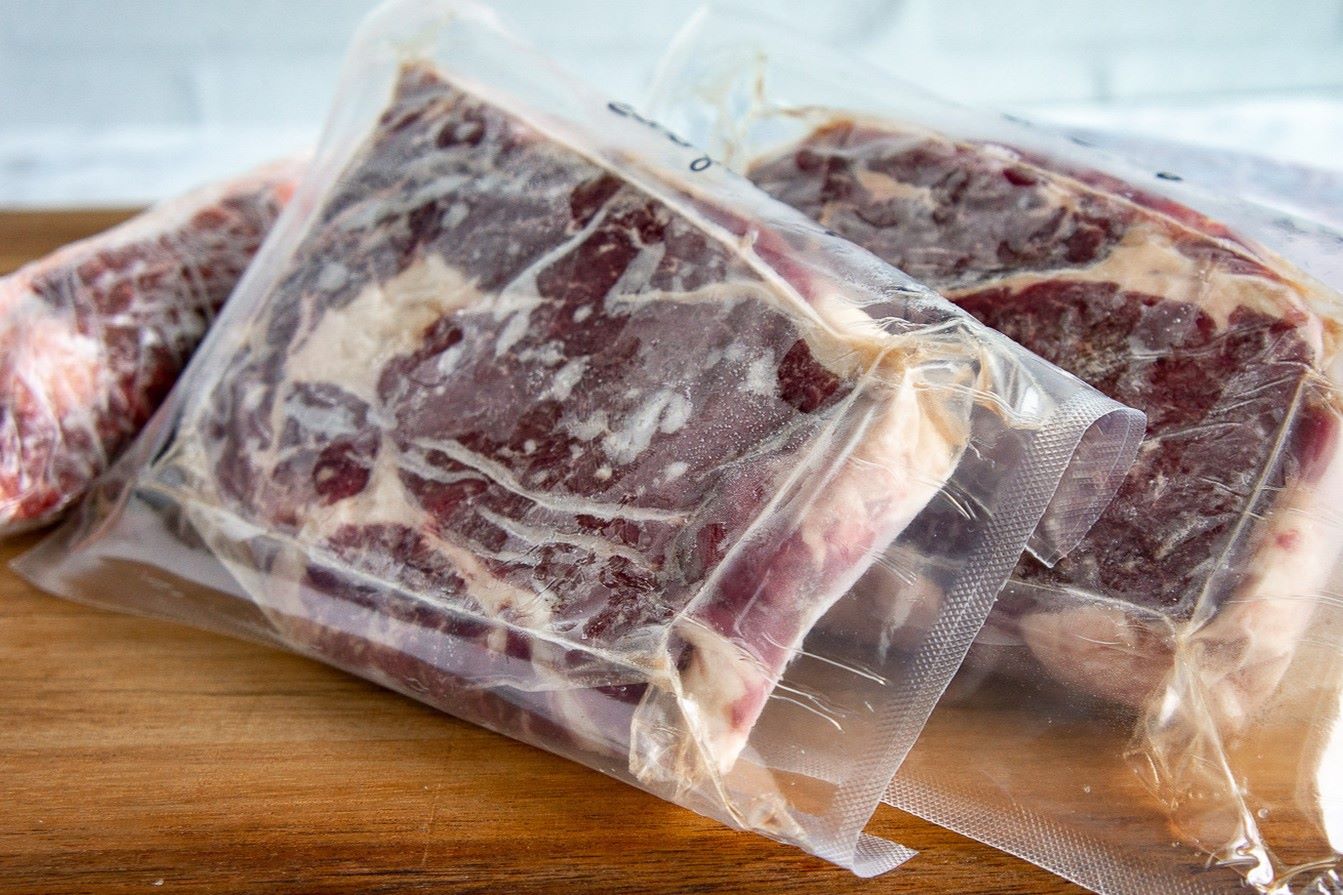

Food and Cooking
How To Defrost Steak
Published: February 29, 2024
Learn the best methods for safely defrosting steak to ensure a delicious and safe meal. Discover expert tips and techniques for thawing steak properly. Perfect for food and cooking enthusiasts!
(Many of the links in this article redirect to a specific reviewed product. Your purchase of these products through affiliate links helps to generate commission for Noodls.com, at no extra cost. Learn more)
Table of Contents
Introduction
Defrosting steak may seem like a simple task, but it's a crucial step in the cooking process that can significantly impact the final result. Whether you're a seasoned home cook or a culinary enthusiast, mastering the art of defrosting steak is essential for preserving its flavor, texture, and juiciness. The process of defrosting steak involves carefully transitioning it from a frozen state to a temperature suitable for cooking, ensuring that it remains safe to eat and maintains its quality.
Improperly defrosting steak can lead to uneven cooking, loss of moisture, and potential food safety risks. Therefore, understanding the best methods for defrosting steak is key to achieving a delectable and satisfying dining experience. In this comprehensive guide, we will explore the various methods for defrosting steak, providing valuable insights and practical tips to help you navigate this essential culinary task with confidence and finesse.
Whether you're planning a special dinner or simply craving a perfectly cooked steak, the way you defrost it can make all the difference. Join us as we delve into the art and science of defrosting steak, uncovering the secrets to unlocking its full potential and savoring every mouthwatering bite.
Read more: How To Defrost Salmon
The Importance of Properly Defrosting Steak
Properly defrosting steak is a critical step in the culinary journey that directly impacts the taste, texture, and overall dining experience. When steak is frozen, the water content within its muscle fibers forms ice crystals, which can alter its cellular structure. If not defrosted correctly, these ice crystals can cause moisture loss and affect the tenderness of the meat. Additionally, improper defrosting can lead to uneven cooking, resulting in a steak that is charred on the outside but still frozen or raw on the inside.
By understanding the significance of proper defrosting, individuals can ensure that the steak retains its natural juices and tenderness, ultimately enhancing its flavor profile. When steak is defrosted slowly and evenly, the muscle fibers have the opportunity to relax and reabsorb any lost moisture, leading to a more succulent and enjoyable eating experience.
Furthermore, from a food safety perspective, it is crucial to defrost steak in a manner that minimizes the risk of bacterial growth. When steak is left at room temperature for an extended period, harmful bacteria can multiply rapidly, posing potential health hazards when the meat is consumed. Proper defrosting methods help maintain the integrity of the steak while reducing the likelihood of bacterial contamination, ensuring that it is safe to eat.
In essence, the importance of properly defrosting steak cannot be overstated. It is a fundamental aspect of culinary preparation that directly influences the quality, taste, and safety of the final dish. By approaching the defrosting process with care and attention, individuals can elevate their cooking endeavors and savor the true essence of a perfectly prepared steak.
Methods for Defrosting Steak
When it comes to defrosting steak, there are several methods to choose from, each offering its own unique advantages and considerations. The method you select may depend on factors such as time constraints, the steak's thickness, and your preferred cooking timeline. Let's explore the three primary methods for defrosting steak:
Using the Refrigerator
Defrosting steak in the refrigerator is a reliable and gentle method that allows for gradual thawing, preserving the meat's quality. To defrost steak using this method, simply place the frozen steak on a plate or tray to catch any potential drips and then transfer it to the refrigerator. It's important to keep the steak in its original packaging or wrap it tightly in plastic to prevent cross-contamination and retain moisture.
The refrigerator method requires patience, as it typically takes several hours or even overnight for the steak to fully thaw. However, the slow thawing process helps maintain the steak's texture and juiciness, resulting in a tender and flavorful end product. This method is ideal for individuals who plan their meals in advance and have the luxury of time to allow for gradual defrosting.
Using Cold Water
When time is of the essence, the cold water method offers a quicker alternative for defrosting steak. To use this method, place the sealed steak in a leak-proof plastic bag and submerge it in a bowl of cold water. It's essential to change the water every 30 minutes to ensure that it remains cold and to promote even thawing.
The cold water method is particularly effective for defrosting thinner cuts of steak, as it can expedite the thawing process without compromising the meat's integrity. While it requires more attention than refrigerator defrosting, this method is a practical solution for individuals seeking a faster defrosting option without sacrificing the steak's quality.
Read more: How To Defrost Bacon
Using the Microwave
For those seeking an ultra-fast defrosting method, the microwave provides a convenient solution. When using the microwave to defrost steak, it's crucial to follow the appliance's specific defrosting guidelines and settings. This typically involves using a low power setting and rotating the steak regularly to ensure even thawing.
While the microwave offers unparalleled speed, it's important to exercise caution to prevent partially cooking the steak during the defrosting process. Additionally, microwaving may lead to some loss of moisture, so it's advisable to proceed with cooking the steak immediately after defrosting to minimize any potential texture changes.
Each defrosting method offers its own set of advantages and considerations, allowing individuals to choose the approach that best aligns with their specific needs and circumstances. By understanding the nuances of each method, individuals can confidently navigate the defrosting process and set the stage for a delectable steak-cooking experience.
Using the Refrigerator
Defrosting steak in the refrigerator is a tried-and-true method that prioritizes the preservation of the meat's quality. This approach offers a gentle and gradual thawing process, allowing the steak to retain its natural juices and tenderness. To initiate the refrigerator defrosting method, begin by placing the frozen steak on a plate or tray to capture any potential drips. It's essential to keep the steak in its original packaging or securely wrap it in plastic to prevent cross-contamination and preserve moisture.
The refrigerator method requires patience, as it typically takes several hours or even overnight for the steak to fully thaw. While this extended timeframe may not suit impromptu meal plans, the slow thawing process is instrumental in maintaining the steak's texture and flavor. As the steak gradually transitions from a frozen state to a temperature conducive to cooking, its muscle fibers have the opportunity to relax and reabsorb any lost moisture, resulting in a tender and succulent end product.
One of the key advantages of using the refrigerator for defrosting steak is the preservation of its quality. Unlike rapid thawing methods that can compromise the meat's integrity, the refrigerator method allows for a controlled and gentle thawing process. This is particularly beneficial for thicker cuts of steak, as it ensures that the entire piece thaws uniformly, reducing the risk of uneven cooking.
Furthermore, the refrigerator method aligns well with meal planning and preparation. Individuals who plan their meals in advance can leverage this method to defrost steak gradually, allowing for seamless integration into their cooking schedule. By initiating the defrosting process in the refrigerator the night before, individuals can wake up to a perfectly thawed steak, ready to be seasoned and cooked to perfection.
In essence, the refrigerator method offers a reliable and effective approach to defrosting steak, prioritizing the preservation of its quality and ensuring a tender, flavorful outcome. While it may require foresight and planning, the gentle nature of this method makes it a preferred choice for those who appreciate the art of culinary preparation and seek to savor the true essence of a perfectly thawed steak.
Using Cold Water
When time is of the essence, the cold water method offers a quicker alternative for defrosting steak. This approach is particularly useful when you need to thaw the steak in a shorter timeframe without compromising its quality. To utilize the cold water method, begin by placing the sealed steak in a leak-proof plastic bag, ensuring that it is securely sealed to prevent water from seeping in. Subsequently, submerge the bagged steak in a bowl of cold water, ensuring that it remains fully immersed.
The cold water method is effective due to the rapid heat transfer properties of water, which expedite the thawing process. As the cold water surrounds the steak, it facilitates the transfer of thermal energy, gradually raising the steak's temperature and promoting the breakdown of ice crystals within the meat. This results in a quicker thawing process compared to refrigerator defrosting, making it an ideal solution for situations where time is limited.
It's important to note that the water used for this method should be consistently cold to ensure safe and effective defrosting. To maintain the desired temperature, it's recommended to change the water every 30 minutes, preventing it from reaching a temperature that could promote bacterial growth. By regularly refreshing the cold water, you can ensure that the steak thaws evenly and safely, minimizing the risk of potential contamination.
The cold water method is particularly well-suited for thinner cuts of steak, as it can expedite the thawing process without compromising the meat's integrity. This makes it an excellent option for individuals seeking a faster defrosting alternative without sacrificing the quality of the steak. Whether you're preparing a spontaneous meal or simply need to accelerate the defrosting process, the cold water method offers a practical and efficient solution.
In summary, the cold water method provides a swift and reliable approach to defrosting steak, making it an invaluable tool for individuals navigating time-sensitive culinary endeavors. By harnessing the rapid heat transfer properties of water, this method facilitates efficient thawing while upholding the quality and integrity of the steak, ensuring that it is ready to be transformed into a delectable culinary masterpiece.
Using the Microwave
When time is of the essence and immediate defrosting is required, the microwave emerges as a convenient and efficient solution for thawing steak. This method offers unparalleled speed, making it an attractive option for individuals seeking a rapid defrosting process. However, it is essential to approach microwave defrosting with caution and precision to ensure that the steak thaws evenly and safely.
To initiate the microwave defrosting process, it is crucial to adhere to the appliance's specific defrosting guidelines and settings. Most microwaves feature a defrost function that allows users to input the weight and type of food, enabling the appliance to calculate the optimal defrosting time and power level. When defrosting steak in the microwave, it is advisable to utilize a low power setting to prevent the meat from partially cooking during the thawing process. Additionally, rotating the steak regularly can help ensure even thawing, minimizing the risk of hot spots that could lead to premature cooking.
While the microwave method offers unparalleled speed, it is important to exercise caution to prevent potential texture changes and moisture loss. Unlike the gentle and gradual thawing facilitated by the refrigerator and cold water methods, microwave defrosting can lead to some loss of moisture in the steak. Therefore, it is advisable to proceed with cooking the steak immediately after defrosting to minimize any potential texture alterations.
It is important to note that the microwave method is best suited for thin cuts of steak, as thicker pieces may not defrost evenly and could be susceptible to partial cooking. Additionally, it is essential to monitor the defrosting process closely to prevent any undesirable outcomes. By following the microwave's specific defrosting instructions and exercising vigilance, individuals can leverage this method to quickly and effectively thaw steak when time is of the essence.
In summary, the microwave method provides a rapid and convenient approach to defrosting steak, catering to situations where immediate thawing is necessary. By adhering to the appliance's defrosting guidelines and taking precautions to prevent premature cooking and moisture loss, individuals can harness the microwave's efficiency to expedite the defrosting process, ensuring that the steak is ready to be transformed into a delectable culinary creation.
Read more: How To Cut Ribeye Steak
Tips for Defrosting Steak
When it comes to defrosting steak, implementing a few simple yet effective tips can elevate the process and contribute to a seamless culinary experience. Whether you're a seasoned home cook or a culinary enthusiast, these practical tips can help you navigate the defrosting journey with confidence and finesse.
-
Plan Ahead: If time permits, opt for refrigerator defrosting. Planning ahead allows for a gradual and gentle thawing process, preserving the steak's quality and ensuring a tender, flavorful outcome.
-
Use Quality Packaging: When storing steak in the freezer, invest in high-quality, airtight packaging to prevent freezer burn and maintain the meat's integrity. Quality packaging also facilitates safe and hygienic defrosting.
-
Avoid Room Temperature Thawing: Refrain from defrosting steak at room temperature, as this can promote bacterial growth and compromise food safety. Opt for controlled methods such as refrigerator or cold water defrosting to minimize health risks.
-
Monitor Thawing Time: When defrosting steak in the refrigerator, be mindful of the thawing time to ensure that it aligns with your cooking schedule. Thicker cuts may require additional time, so plan accordingly.
-
Minimize Moisture Loss: During the defrosting process, take measures to minimize moisture loss, as this can impact the steak's texture and succulence. Proper packaging and careful handling can help retain essential juices.
-
Preparation Considerations: If you plan to season or marinate the steak before cooking, factor in the defrosting time to allow for adequate preparation. This ensures that the steak is ready to absorb flavors and enhance its overall taste profile.
-
Safe Handling Practices: Practice safe food handling throughout the defrosting process to minimize the risk of cross-contamination and ensure food safety. Clean surfaces, utensils, and hands thoroughly to maintain a hygienic environment.
-
Immediate Cooking: After defrosting, aim to cook the steak promptly to preserve its quality and minimize any potential texture changes. Immediate cooking also reduces the risk of bacterial growth, ensuring a safe and enjoyable dining experience.
By incorporating these tips into your defrosting routine, you can optimize the process and set the stage for a delightful culinary adventure. Whether you're preparing a special meal or simply indulging in a well-deserved treat, these tips can help you achieve a perfectly thawed steak, ready to be transformed into a mouthwatering masterpiece.
Conclusion
In the realm of culinary arts, the journey from freezer to plate is a pivotal chapter in the saga of steak preparation. As we conclude our exploration of defrosting steak, it becomes evident that this seemingly simple task holds the power to shape the entire dining experience. The art and science of defrosting steak extend far beyond the mere act of transitioning it from a frozen state to a cookable temperature. It embodies a delicate balance of preserving quality, ensuring safety, and setting the stage for culinary excellence.
Throughout this comprehensive guide, we have delved into the nuances of defrosting steak, uncovering the significance of proper thawing methods and the impact they have on the final dish. From the gentle embrace of refrigerator defrosting to the swift efficiency of cold water and microwave methods, each approach offers its own set of advantages and considerations, catering to diverse culinary needs and timelines.
The importance of proper defrosting cannot be overstated, as it directly influences the taste, texture, and safety of the steak. By understanding the significance of gradual thawing and implementing best practices, individuals can elevate their culinary endeavors and savor the true essence of a perfectly prepared steak.
As we bid farewell to this culinary expedition, it is essential to carry forth the wisdom gained from our exploration. The art of defrosting steak is a testament to the meticulous care and attention that underpins the culinary craft. It is a reminder that every step in the cooking process, no matter how seemingly mundane, holds the potential to transform a meal into a memorable experience.
Whether you are a culinary enthusiast seeking to perfect your steak-cooking prowess or an aspiring home cook eager to embark on a flavorful journey, the art of defrosting steak serves as a cornerstone of culinary mastery. By embracing the principles of patience, precision, and practicality, individuals can embark on a culinary odyssey that celebrates the essence of a perfectly thawed steak, ready to be savored and celebrated.
As we part ways, let us carry forth the knowledge gained and infuse our culinary endeavors with the spirit of creativity, care, and culinary finesse. For in the realm of cooking, every step, no matter how seemingly small, has the power to elevate a dish from ordinary to extraordinary. Cheers to the art of defrosting steak, a humble yet indispensable chapter in the grand narrative of culinary delight.

